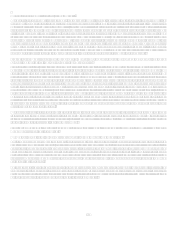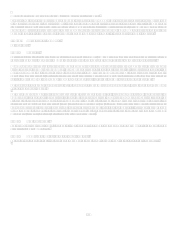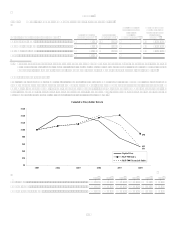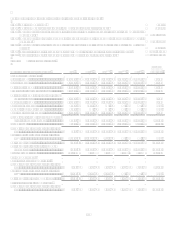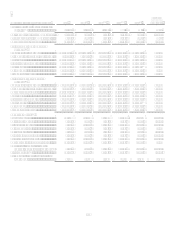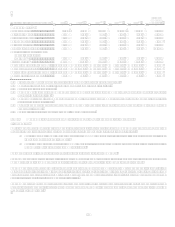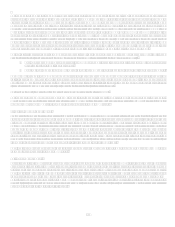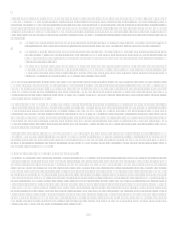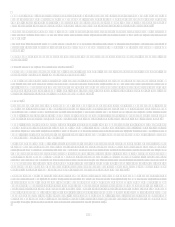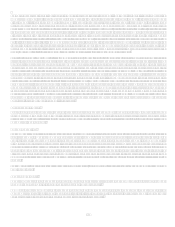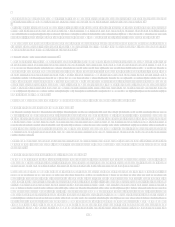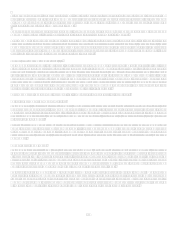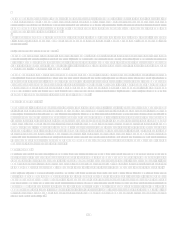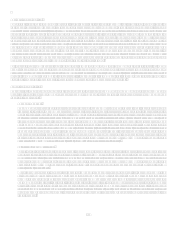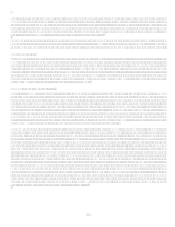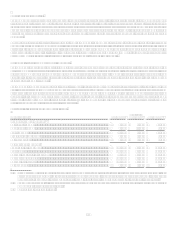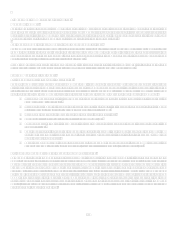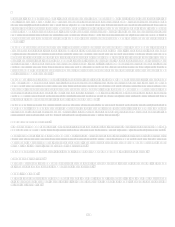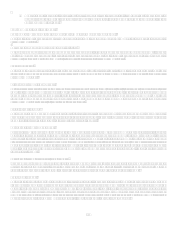Capital One 2008 Annual Report Download - page 51
Download and view the complete annual report
Please find page 51 of the 2008 Capital One annual report below. You can navigate through the pages in the report by either clicking on the pages listed below, or by using the keyword search tool below to find specific information within the annual report. 33
The Auto Finance reporting unit was required to move to the second step of the goodwill impairment test which is used to measure the
amount of impairment loss, if any. The second step compares the implied fair value of reporting unit goodwill to the carrying amount
of that goodwill. If the carrying amount of the goodwill exceeds the implied fair value of the goodwill, an impairment loss is recorded
for the excess. The implied fair value of goodwill is determined in the same manner as the amount of goodwill recognized in a
business combination. That is, an entity shall allocate the fair value of a reporting unit to all of the assets and liabilities of that unit
(including any unrecognized intangible assets) as if the reporting unit had been acquired in a business combination and the fair value
of the reporting unit was the price paid to acquire the reporting unit. The excess of the fair value of a reporting unit over the amounts
assigned to its assets and liabilities is the implied fair value of goodwill. In the allocation of fair value of the Auto Finance reporting
unit to its assets and liabilities, the Company assigned a $1.5 billion discount to the net carrying amount of its loans, largely due to the
lack of liquidity and credit deterioration in the auto securitization market. The Company also assigned a $1.4 billion discount to the
carrying amount of its liabilities, largely due to increased spreads resulting from the credit crisis. Based on the final results of the
annual impairment test, a loss of $810.9 million was recognized for the year-ended December 31, 2008.
As part of the annual impairment test, the Company assessed its market capitalization based on the prior month average market price
relative to the aggregate fair value of its reporting units and determined that any excess fair value in its reporting units at that time
could be attributed to a reasonable control premium compared to historical control premiums seen in the industry. During the fourth
quarter of 2008 and continuing into 2009, our stock price, along with the stock prices of others in the financial services industry,
declined significantly resulting in a decline in our market capitalization subsequent to our annual goodwill impairment testing date. As
a result of this decline, we reassessed and updated assumptions from our annual testing and concluded that while it is reasonable to
consider market capitalization as one indicator of fair value of our reporting units, the Company does not believe the fourth quarter
decline in our market capitalization resulted in any further goodwill impairment in 2008. We believe the fourth quarter 2008 decline in
our market capitalization to be primarily attributable to the current lack of liquidity in the financial markets and to continuing
economic deterioration with a corresponding decline in the fair value of the Companys tangible net assets that are also impacted by
those factors, as reflected in the fair value disclosures in Item 8 Financial Statements and Supplementary Data Notes to the
Consolidated Financial Statements Note 12, instead of a decline in the implied fair value of goodwill. However, we will continue to
regularly monitor declines in our market capitalization in 2009, overall economic conditions and other events or circumstances that
might result in an impairment of goodwill in the future.
Other Intangible Assets
Other intangible assets having finite useful lives are separately recognized and amortized over their estimated useful lives and
reviewed for impairment. An impairment loss is recognized if the carrying amount of the intangible assets is not recoverable and its
carrying amount exceeds its fair value. There were no impairment losses recognized for other intangible assets during the years ended
December 31, 2008 and 2007.
Revenue Recognition
The Company recognizes earned finance charges and fee income on credit card loans according to the contractual provisions of the
credit arrangements. When the Company does not expect full payment of finance charges and fees, it does not accrue the estimated
uncollectible portion as income (hereafter the suppression amount). To calculate the suppression amount, the Company first
estimates the uncollectible portion of credit card finance charge and fee receivables using a formula based on an estimate of future
non-principal losses. This formula is consistent with that used to estimate the allowance related to expected principal losses on
reported loans. The suppression amount is calculated by adding any current period change in the estimate of the uncollectible portion
of finance charge and fee receivables to the amount of finance charges and fees charged-off (net of recoveries) during the period. The
Company subtracts the suppression amount from the total finance charges and fees billed during the period to arrive at total reported
revenue.
The amount of finance charges and fees suppressed were $1.9 billion and $1.1 billion for the years ended December 31, 2008 and
2007, respectively.
Nonperforming Assets
Nonperforming assets include nonaccrual loans, impaired loans, certain restructured loans on which interest rates or terms of
repayment have been materially revised and foreclosed and repossessed assets.
Commercial loans, consumer real estate and auto loans are placed in nonaccrual status at 90 days past due or sooner if, in
managements opinion, there is doubt concerning full collectibility of both principal and interest. All other consumer loans and small
business credit card loans are not placed in nonaccrual status prior to charge-off.


